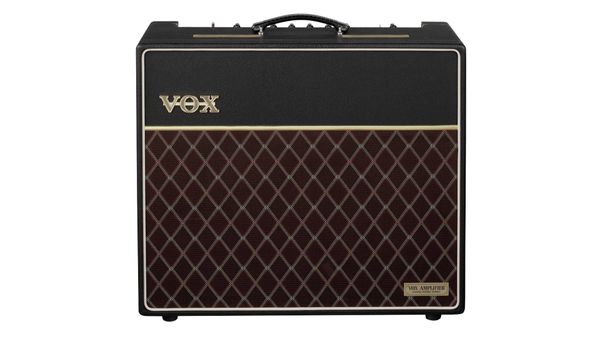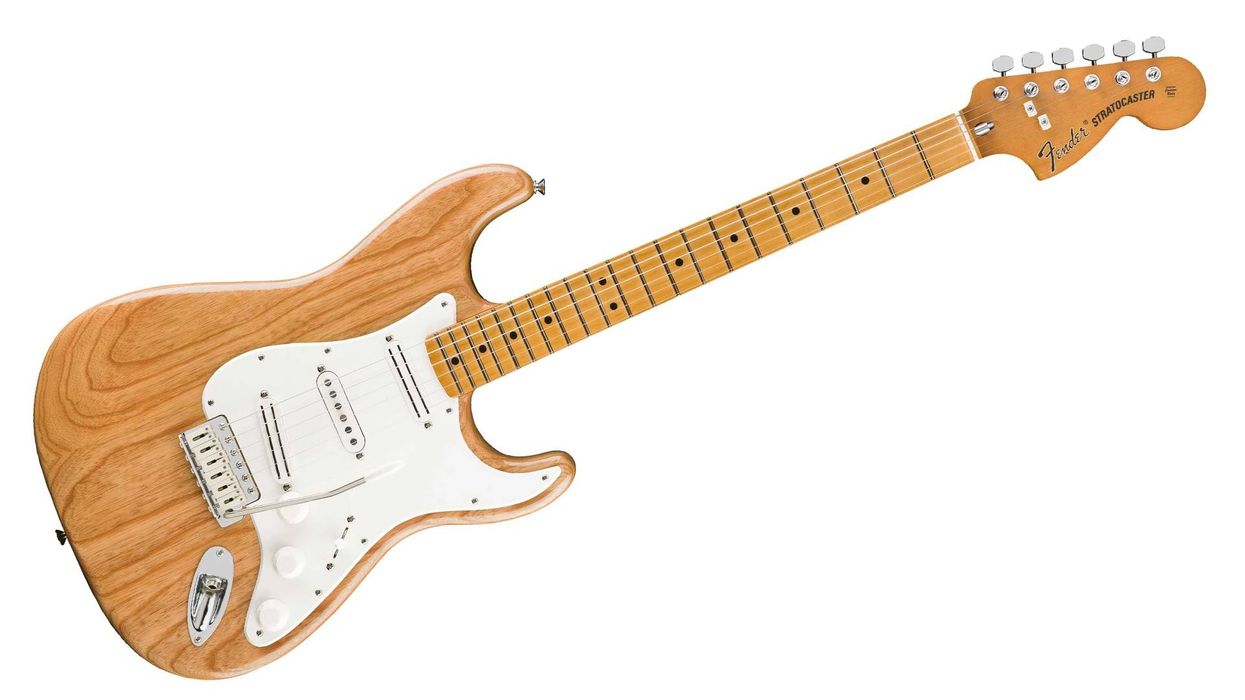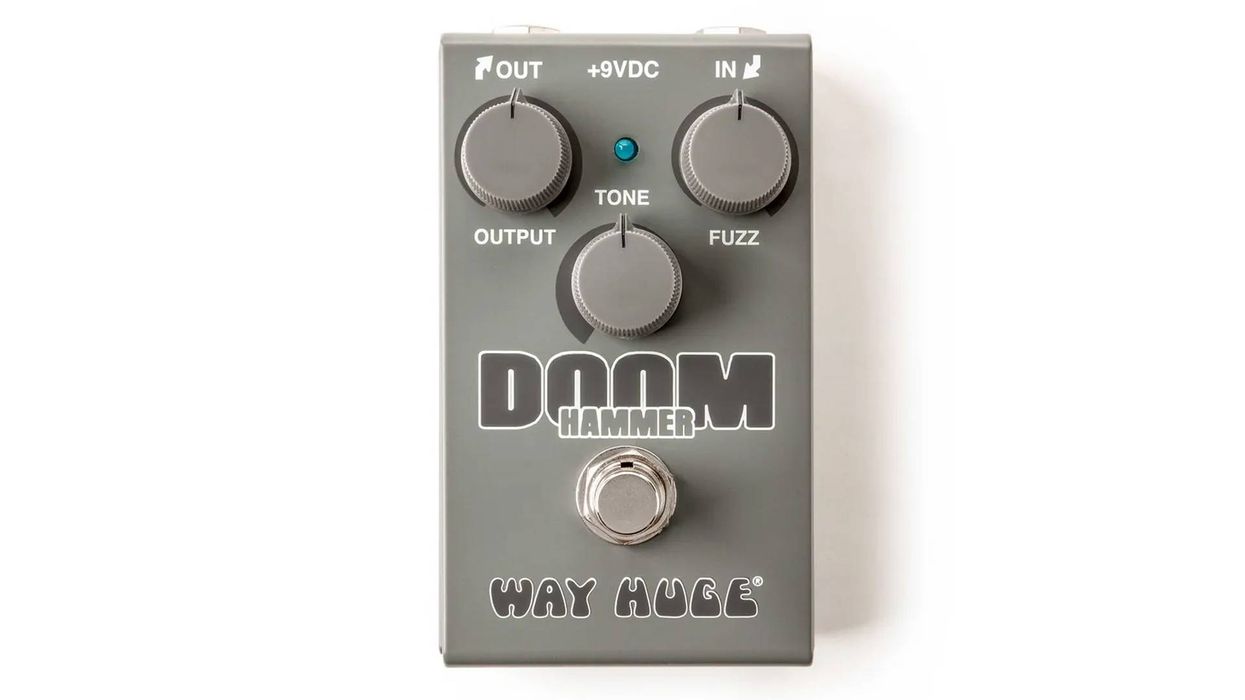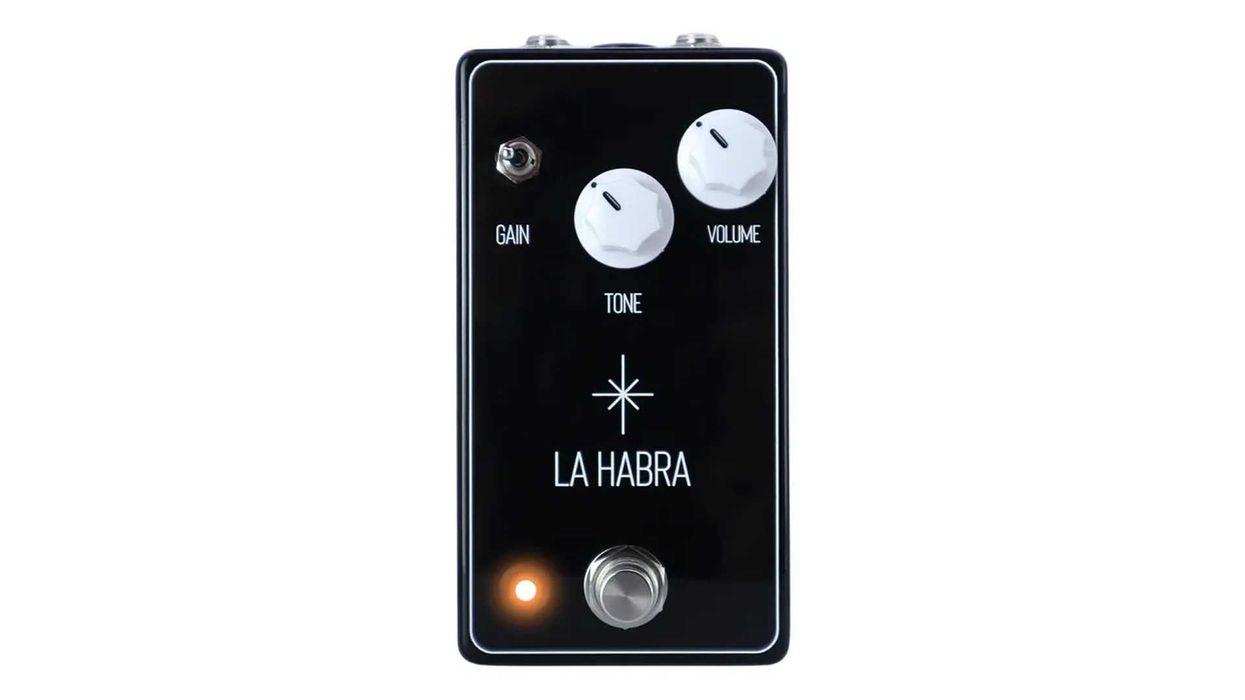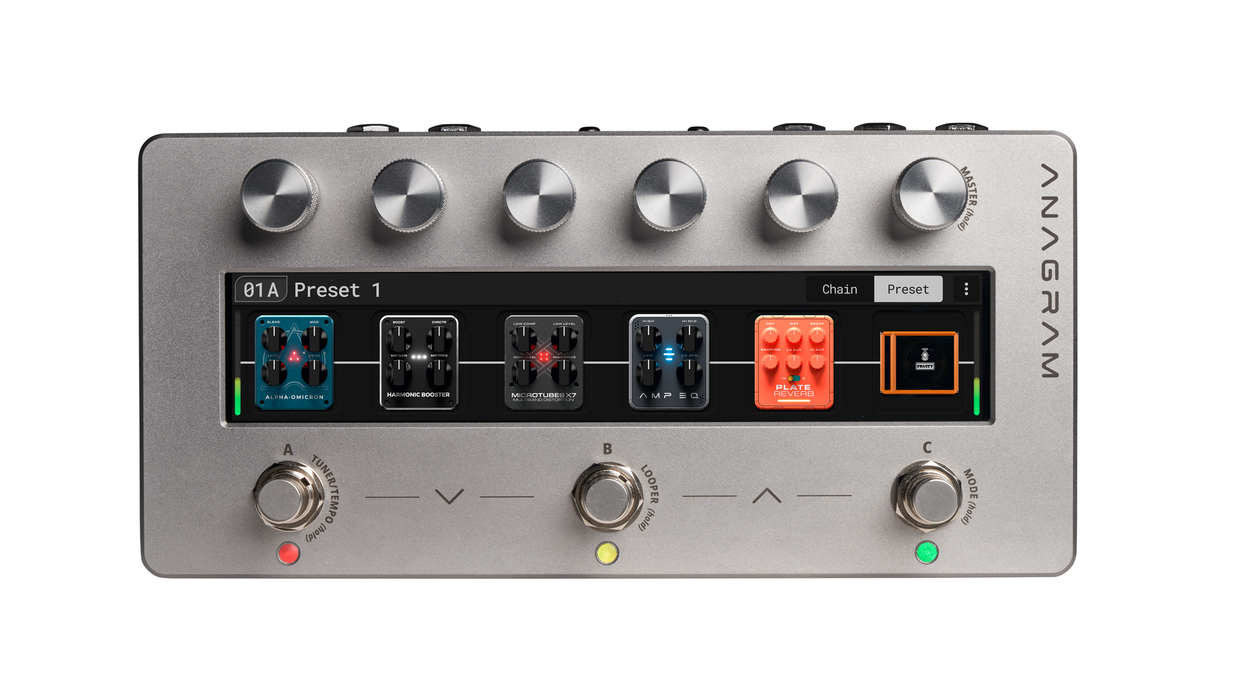Since it was first introduced in 1958, Vox has released myriad iterations of the AC15 combo—built variously in England and Asia, and offered in both hand-wired and PCB formats. The new AC15 Hand-Wired suggests a strictly old-school ethos, but several of its features—most notably a move from EF86 to 12AX7 preamp tubes—are deviations from vintage form. That does result in a different feel in some situations; at times it sounds and feels more like a half-power, 1x12 AC30 than a vintage AC15. But this iteration is arguably more flexible than its predecessor, too.
Channel Crossing
Given the microphonic tendencies of EF86 tubes, the switch to 12AX7s is an intriguing and practical move. Elsewhere among the tube complement, there’s a 12AT7 for the preamp and phase-inverter, two EL84s in the output stage for 15 watts RMS, and a GZ34 tube rectifier. It’s all housed in a classic Vox combo cab measuring 22 1/4"x23 1/4"x1 1/2".
The AC15 Hand-Wired’s normal channel has just a single knob for volume. But its voicing can be tweaked via a bright switch and the tone cut knob in the master section, and there’s also a boost switch to increase gain. The top boost channel features volume and dedicated treble and bass controls, but no boost or bright switch. Both channels have high and low inputs, and the latter can be handy for taming hot humbucker-equipped guitars.
The fine-tuning capabilities of the amp extend to the footswitchable, tube-driven, spring reverb circuit, which has a tone control in addition to its level, enabling you to fine-tune the frequency emphasis of the reverb itself. Send and return jacks for the effects loop—along with a bypass switch and a –10/+4 dB level switch for compatibility with both rack and pedal effects—are smartly positioned along the lower edge of the upper-back panel, rather than on the underside of the chassis. Dual speaker-outs have an impedance switch for 8- and 16-ohm operation. (The combo’s Vox-labeled Celestion Alnico Blue requires the latter.)
Vox was careful to reproduce the windings of a vintage AC15 output transformer circa 1963, which results in a heftier chunk of metal than you might expect in an amp this size. Vox makes up some of that weight by using slightly thinner plywood for the cabinet walls, which are just less than 1/2" in thickness—matching vintage specifications and, in Vox’s estimation, enhancing resonance and dimensionality. As with many AC15s past, the transformer and alnico speaker help push this new edition to 50 lbs, making for a surprisingly heavy combo of this size and output power. It might have been nice for Vox to slim things down. On the other hand, the amp might lose what turns out to be a strong, audible vintage spirit without those heavier design elements.
Chiming In
Paired with a Gibson ES-335 and a Fender Telecaster, the AC15 Hand-Wired plated up many impressive slices of vintage Vox tone, with plenty more versatility on top. With all knobs at noon and the boost and bright switches on the normal channel engaged, the two channels sound remarkably similar. There might be just a touch more grind and sparkle on the top boost side, but it’s close! At these levels, both channels still summon plenty of break up with a Telecaster. Switching to the ES-335’s humbuckers predictably kicks the overdrive up a notch at the same settings.
The boost switch on the normal channel isn’t always a breeze to manage. It delivers a pretty big jump in gain and, with it, a slightly ragged edge at some settings. With both boost and bright switches down, though, the normal channel is rich, warm, and muscular, and makes an excellent, adaptable platform for gain pedals (in my case an Analogman Prince of Tone and a Wampler Tumnus Deluxe). Knock this normal channel volume up to around 2 o’clock and it segues into toothsome sounds that dip into clipping under heavier pick attack.
Arguably the most delectable tones are found in the top boost channel with all three knobs set to around 11 o’clock. Here, the AC15 Hand-Wired achieves its closest approximation of vintage Vox tone: chewy midrange, lots of chime and sparkle in the highs, and a dynamic edge-of-breakup touch sensitivity that you can control and vary via pick attack. Cranked up, the top boost channel roars with a throaty, shimmery vintage lead tone, although at the expense of the delectable dimension and clarity achieved at lower volumes.
The amp’s master volume, by the way, is very effective at tailoring the AC15 Hand-Wired for a range of room requirements, and is essential for smaller venues. This amp is loud when maxed—probably a lot louder than you’d expect from a 15-watt 1x12" combo—which is another classic characteristic of the AC15. It’s worth noting that things can get a little ratty with the master below 10 o’clock and either channel volume up high, but that’s par for the course with such circuits.
The Verdict
Vox’s new AC15 Hand-Wired combo does a good job of capturing much of the vintage-voiced spirit of the classic while offering many features that are must-haves for modern guitarists less burdened by complete vintage correctness. And if it’s not a point-perfect reproduction, it honors the sound and spirit of the original—and looks the part onstage, too.
